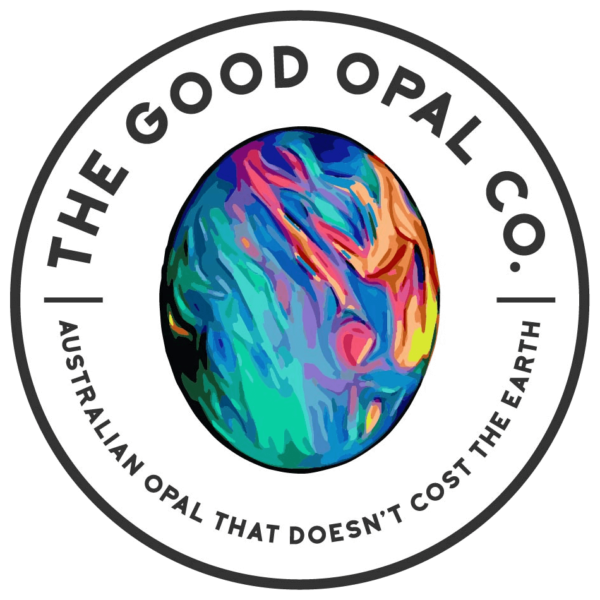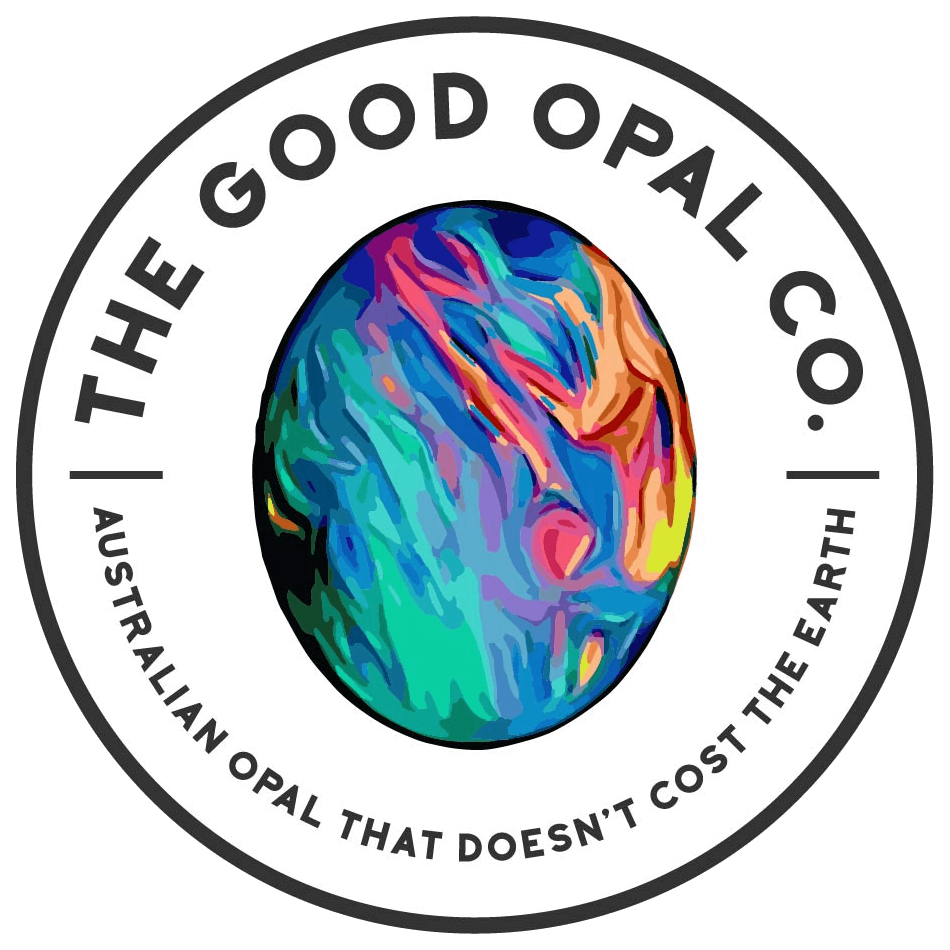At The Good Opal co. our favourite opal material to cut is Lightning Ridge Opal. We know! The GOC (Good Opal co.), and every other person and their dog! But if you’ve read About Us: https://www.goodopalco.com/about-the-good-opal-co/ you’d know that a trip to Lightning Ridge is what started this dream, but it’s not just the prestige.
Lightning Ridge Opal cuts incredibly generously compared to opal from other parts of Australia. It can be more predictable which is an opal cutter’s dream but it also incredibly beautiful material and it’s host rock-sand stone is incredibly easy and quick to work with compared to host rock like iron stone (boulder opal) and lime stone (Andamooka Opal) etc.
Below we’ve listed all the not so known fun facts about Lightning Ridge we think everyone should know!
Lightning Ridge Opal Types
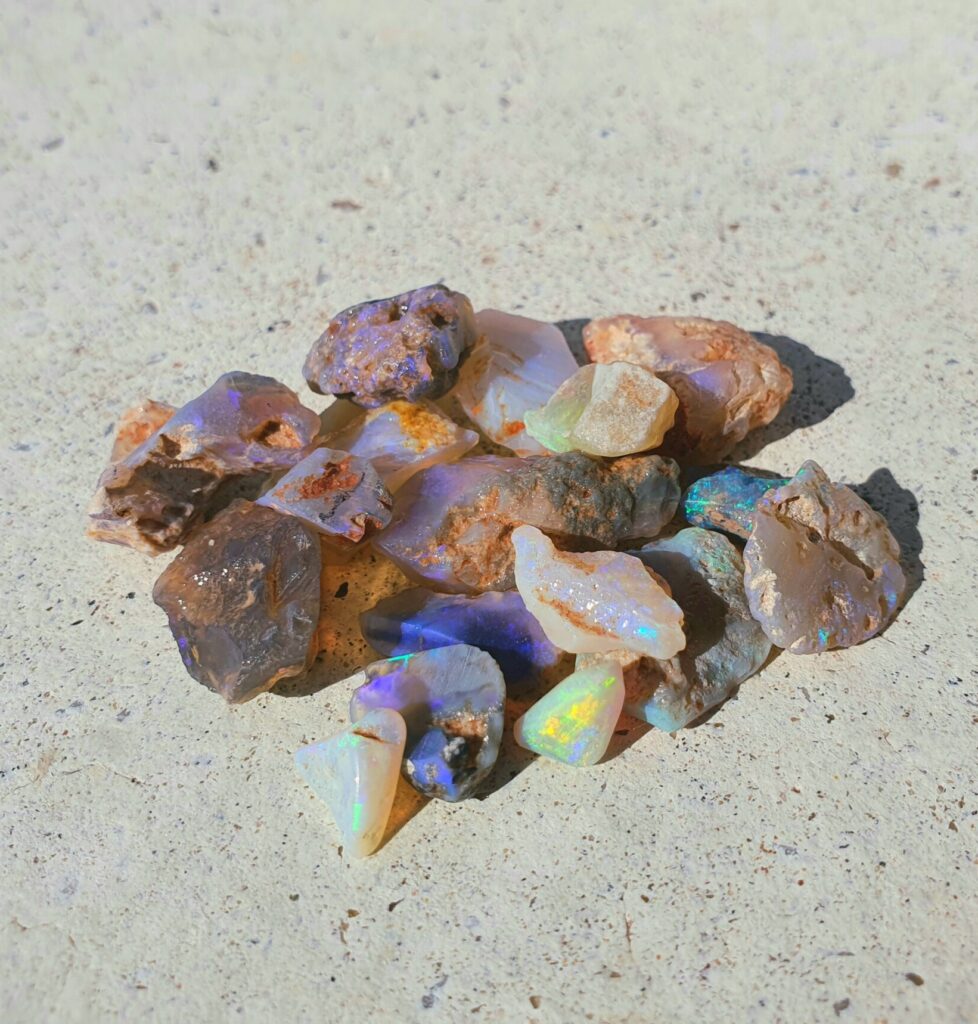
Crystal Opal
Unlike other forms of opal, in crystal opal the colour can run all the way through the entire stone including the base depending on the level of clarity there is.The flash of colour in crystal opals is often incredibly vibrant and bright, even more so at times then Black Opal.
They have a high-purity level of Opal and when opaque (non-see-through) can also be well-known as White or Milk Opals. Compared with other Opals, they are composed of hydrated silica.
Purple colouring is the most common type of Crystal Opal. Red is the rarest crystal opal colour. Unlike other forms of Opal, Crystal Opal is formed without a base (like potch, ironstone, or sandstone). It is appreciated by many for its rarity and unique colour patterns. The most expensive variation is Black Crystal Opal from Lightning Ridge, Australia. They have some of the most amazing unique patterns and are well sought after by Opal collectors.
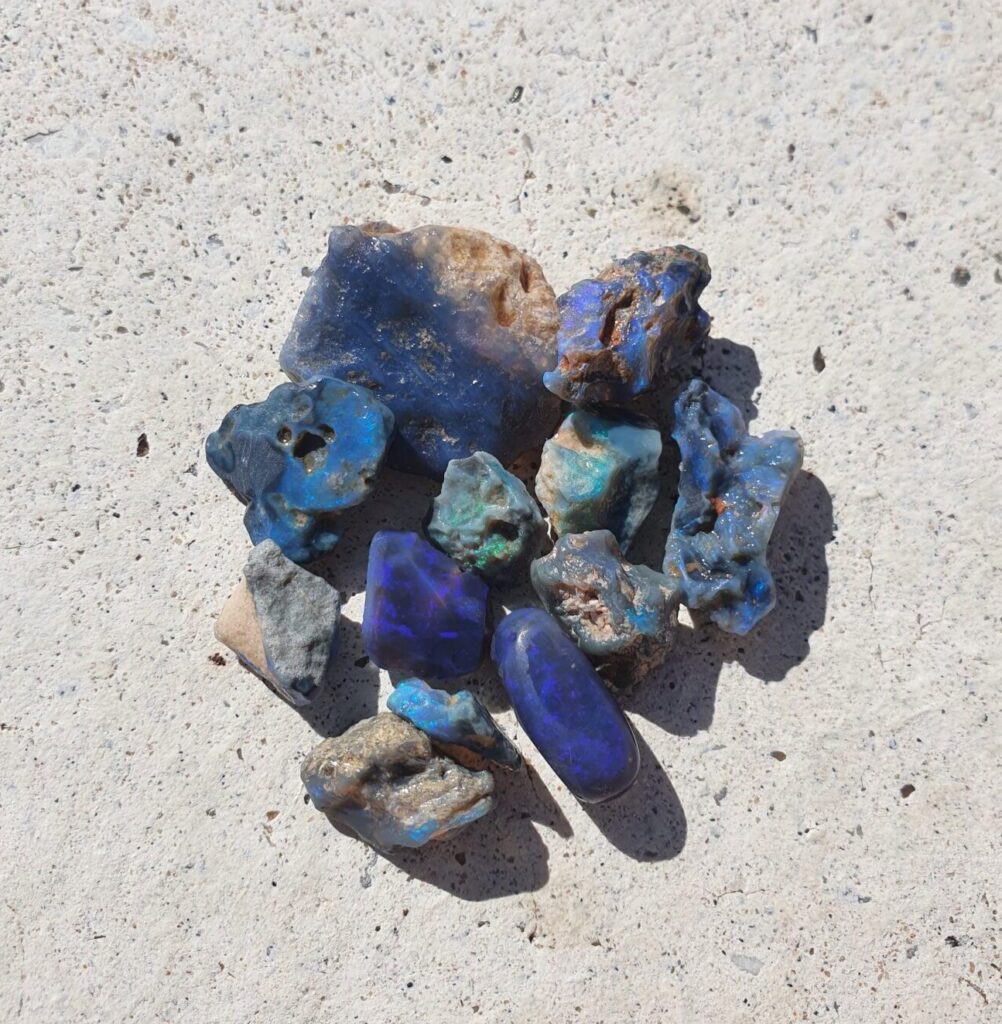
Black Opal
Black opal is the rarest and most valuable gem in the world. Top of the range gem quality black opal can be worth up to AUD $40,000 per gram. However, just because an opal is black, that doesn’t make it valuable. There are many factors including brightness, presence of colour and pattern, which determine the overall value of opal.
Black opal bares its name due to the dark body tone of the opal– the colour of the opal when you turn it over. The darker the body the more valuable the stone may be. It is this darkness that lends brightness to the other colours displayed with in the gemstone. Whilst dark opal has been found in other areas including white cliffs and Coober Pedy, Black opal can now only be found on one place on earth and that is in the small town of Lightning Ridge NSW. Lightning Ridge is the black opal capital of the world, producing 95% of the world’s Black Opal.

White Opal
White opals are the most common form of opal found and often have white potch (colourless opal) left on the back of the stone. However, sometimes the entire stone will consist of colourful opal and this is often due to the similarities that white opal bears to crystal opal. White opal isn’t always opaque white but can be milky or even close to transparent as seen in the picture to the right.
There is a fine line between white opal and crystal opal. Sometimes there is only a mild or medium translucence which may lead to the opal being classified as either a milky opal or a crystal opal. When a white opal is partially translucent, it often enhances the clarity and vibrancy of the colour, and thus the value of the stone.
Therefore, a white opal which has some of the properties of a crystal opal will often have a higher value. Funnily enough, where with black opal, red is the rarest and most valuable colour, on white opal red occurs much more often and with good brightness, the vibrancy of the red colouring can look beautiful against its pale backing.
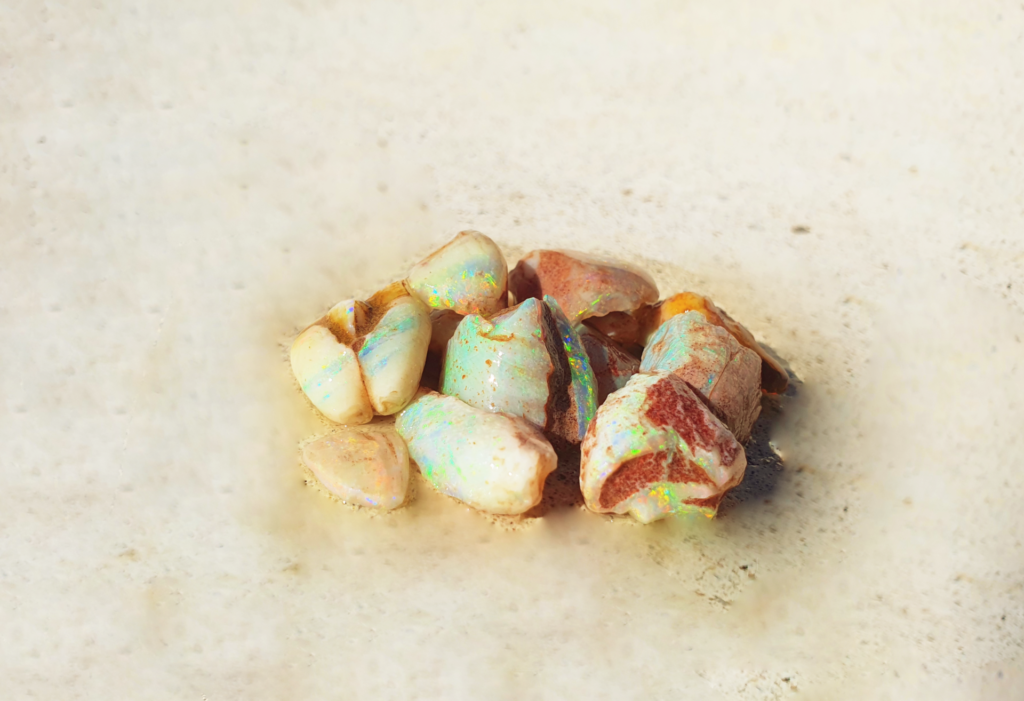
Fossil Opal
Opal forms in cavities within rocks. If the cavity is there because part of what was once a living thing – for example a bone or a shell – buried in the sand or clay before it turned to stone, then the opal can form a fossil replica of the object that was buried there. Coober Pedy produces fossils of saltwater or marine organisms, due to the positioning of the ancient Eromanga Sea 100 million years ago.
However, Lightning Ridge exclusively produces Land animal fossils including (drum roll please) Dinosaur Opal fossils of species that have never before been discovered. You can Shop our range of fossil opals in store at: https://www.goodopalco.com/product-category/opals/fossil-opals/.
Lightning Ridge Opal Fields
- The Three Mile — This is the most extensively worked and by far the most productive area on the field, and at one time 1,000 people were engaged in opal mining there. In recent years relatively large-scale open cut mining has been carried out.
- Thorleys Six Mile — The first shaft on the field is reported to have been sunk in this area in February, 1902. A rush to this long-abandoned area in May 1970 resulted in the recovery of many good quality black opals, very close to where the first shaft on the field was sunk.
- Nobbys (Old Nobby) — One of the first shafts on the Lightning Ridge field was sunk at Nobbys. Opal was initially found in gravel at the foot of the ridge.
- New Nobby (or New Rush) — New Nobby was first worked intensively in 1960 when a prospecting shaft about 12 m deep returned precious opal, resulting in a rush to the area and the sinking of about 100 shafts.
- Deep Four Mile —A reasonable quantity of good quality opal was extracted from five claims here in the 1930s.
- McDonalds Six Mile (or The Six Mile)
- Rouses Six Mile — The location of this area is uncertain but it is known to be close to McDonalds Six Mile.
- Nine Mile
- Nebea Hill — This field was discovered in 1973. It was estimated that eight claims produced over $3,000,000 worth of opal in 2 years. Large-scale open-cut mining followed intensive underground mining.
- Shallow Belars
- Hawks Nest
- Bald Hill
- New Chum and Old Chum
- Coocoran — The Coocoran Lake opal fields are approximately 20 km west of Lightning Ridge. First mined in the 1920’s, this field was the site of a major rush in the early 1990s and currently produces an estimated 80% of the black opal output of Lightning Ridge.
- Sheepyard — This field near Glengarry was found in 1985 and was the centre of a major opal rush.
- Grawin —42 km south-west of Lightning Ridge, are very extensive and large amount of opal has been won, particularly at Hammonds Hill and Richards Hill. Throughout the Grawin field.
- Glengarry —four km to the north-east of Grawin. The opal is always found in seams and opal nodules have not been recorded from this location. It is estimated that $600 000 worth of opal was recovered between January and June 1972 .
- Mulga Rush and Wee Warra North — Located between Grawin and Glengarry, these fields were found in late 1999. As with the Sheepyard, the area was the centre of a major rush with over 500 mineral claims being granted in the first 4 months of the discovery.
- Carters Rush — This field, about 5 km north-east of Grawin, was first developed in 1974.
- New Angledool (Mehi) — This field was discovered in 1924.
Fossicking for Lightning Ridge Opal
Fossicking in Lightning Ridge can be done anywhere as long as its not on private property (someone’s active mine) Miners don’t take too kindly to thieves or more accurately Ratters. Mullock heaps are dumped on the sides of roads, all around Grawin and in town as well as at the Lightning Ridge Visitor’s centre ( https://lightningridgeinfo.com.au/contact.html). However, We’ve had more luck in recent years fossicking on the sides of roads and then we have in the heaps! It can be everywhere and anywhere and also nowhere!
